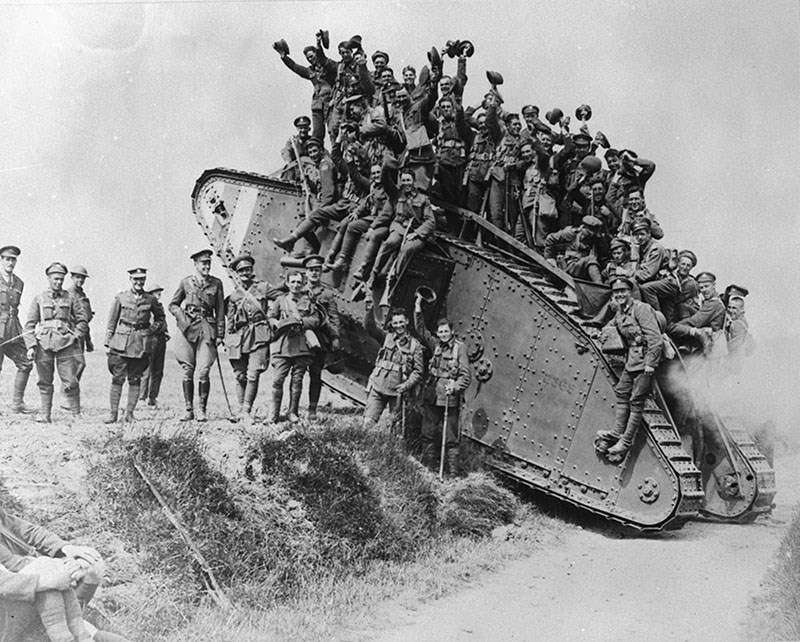Tom Slater & Tom St. Amand
The First World War entered its final phase 100 years ago this month when the Allies launched a series of successful offensives to push the Germans out of France.
The first was the Battle of Amiens (Aug. 8 – 14) when four men from Sarnia were among the first to fall in what’s known today as the closing “Hundred Days Offensive.’
Canadian and Australian forces were tasked with spearheading the assault at Amiens. By then, the Allies had come to rely heavily on the Canadians, the “shock troops” of the British Empire whose planning and innovative tactics had produced victories at Vimy, Hill 70, and Passchendaele.
The head of the Canadian forces, Sir Arthur Currie, had an effective but complicated plan that involved fast-moving infantry and engineers supported by artillery, tanks, armoured cars and aircraft.
The goal was to find German “soft spots” and dislodge the enemy from their entrenched positions.
The surprise assault began in dense fog at 4:20 a.m. on Aug. 8, 1918. After artillery bombarded the German front lines the infantry moved into a battlefield of smoke and fire.
Three Sarnians died the first few days.
Private Urban Noel, 22, described as a “noble soldier” of the 102 Battalion, died instantly from a bullet to the head as he emerged from the woods.
His parents on Cotterbury Street learned from a chaplain's letter their son had given confession and received communion just hours before being cut down.
Private William Reynolds, 25, a stretcher-bearer with the 18th Battalion, died Aug. 9 of chest wounds received the day before. At a Salvation Army memorial service, the congregation learned his final request had been that his mother be told: “I was not afraid of death - I was game to the last.”
On Aug. 10, Lieutenant Walter Scott, 25, of the 47th Battalion, was leading his platoon in attack on an occupied village when he was felled by machine gun fire. His name is listed on the “Roll of Honour of the Ontario Teachers Who Served in the Great War.”
Private Fred Williams, in his 40s and with the 18th Battalion, was severely wounded in action on Aug. 9. He died almost two months later in a French hospital.
His widow, Eva, received a telegram in Sarnia confirming his death a month before the war ended.
In all, 11,000 Canadian soldiers were killed and wounded at Amiens, but the Allied success at tearing a hole in the impregnable German trenches proved a major turning point of the war and signaled the beginning of the end.
